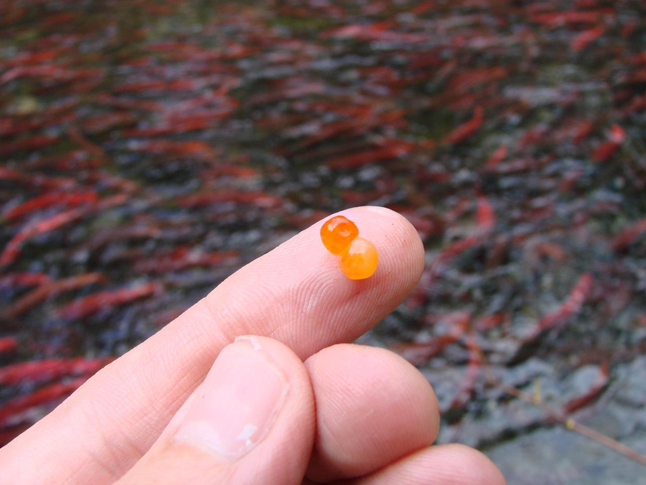
In 2008 the kokanee egg-to-fry-survival rate was record breakingly high at Hill Creek Spawning Channel at 69.4 per cent. Hot on the heels of that record-setting year comes 2009 with a new record for the number of kokanee eggs deposited.
The 3.2 kilometre Hill Creek Spawning Channel was built with BC Hydro funding to compensate for the loss of spawning habitat due to the construction of Revelstoke Dam. It is located 56 kilometres north of Nakusp, near Galena Bay, and jointly managed by the Fish and Wildlife Compensation Program (FWCP) and the B.C. Ministry of Environment (MOE).
Each year the MOE hopes to have at least 12 million eggs deposited at Hill Creek Spawning Channel. In fall 2009 the total number of eggs deposited in the gravel was approximately 30 million. This is the highest ever number of eggs recorded since the channel was constructed in 1980. The second highest egg count was in 2000 at 22 million.
“We are extremely pleased about these numbers,” says Jeff Burrows, chair of the FWCP Fish Technical Committee. “Clearly the channel is working well and these numbers underscore the importance of Hill Creek Spawning Channel to the Arrow Lakes ecosystem.”
Depending on the year, the Hill Creek Spawning Channel may account for 80% or more of upper basin fry production and around 60% of total Arrow production.
Brian Barney, who looks after the day-to-day operations at Hill Creek Spawning Channel, is also extremely satisfied about the returns. “We work with some excellent local contractors and, together, have ensured that the spawning gravel is in top condition these last few years. Of course, with such a high egg count, the fall and winter work has just begun. We need to work hard to make sure that a substantial proportion of eggs survive, and good numbers of healthy fry swim out next year.”
In late winter the eggs hatch, turning into alevin – a small fish-like body with a yolk sac attached to its underside. They feed off the sac for about six weeks before emerging from the gravel as fry in the spring, after which they head downstream towards the reservoir.
The Fish and Wildlife Compensation Program works on behalf of its program partners BC Hydro, the B.C. Ministry of Environment and Fisheries and Oceans Canada to conserve and enhance fish and wildlife impacted by the construction of BC Hydro dams.
News release courtesy of the Fish & Wildlife Compensation Program www.fwcp.ca
For more information please contact Angus Glass at angus.glass@bchydro.com or by phone at 250-352 6874



